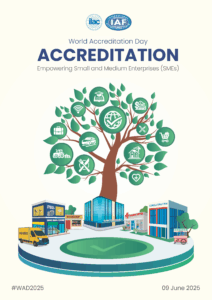World Accreditation Day: A Historical Timeline in the Calibration Industry
 Key Milestones in Calibration Accreditation History
Key Milestones in Calibration Accreditation History
June 9th marks World Accreditation Day, a global celebration of the critical role accreditation plays in advancing quality, safety, and trust across industries. For the calibration industry, accreditation isn’t just a seal of approval, it’s the backbone of global measurement consistency and compliance. This mutually beneficial relationship ensures that calibrated tools meet rigorous international standards, enabling reliable results, audit readiness, and cross-border acceptance. In this blog post, we take a historical journey through the milestones that shaped calibration accreditation, from the founding of the Metre Convention to the modern ISO/IEC 17025 standard, highlighting how accreditation has evolved alongside the calibration industry to support innovation, precision, and global trade.
1875 — Global Measurement Begins
Metre Convention signed
Established the BIPM, laying the foundation for international measurement standards.
1947 — ISO is Founded
International Organization for Standardization (ISO)
Created to develop consistent global standards—including those influencing calibration and quality systems.
1978 — ISO/IEC Guide 25 Published
First formal global standard for calibration/testing lab competence
Paved the way for future accreditation systems.
1999 — ISO/IEC 17025 is Born
Replaced Guide 25
Established the modern gold standard for calibration and testing lab accreditation.
2000 — ILAC Mutual Recognition Arrangement (MRA)
Global trust in calibration results
Enabled international acceptance of results from accredited labs—critical for global compliance.
2005 — ISO/IEC 17025 Updated
Alignment with ISO 9001:2000
Brought quality management deeper into calibration lab accreditation.
2017 — Major ISO/IEC 17025 Revision
Modernization and risk-based thinking
Updated for new tech, better alignment with ISO 9001:2015, and clarified metrological traceability.
2000s–Present — Regulatory Integration Expands
FDA, FAA, EU GMP adopt calibration standards
Accreditation becomes a regulatory requirement, not just a best practice.
2000s–2020s — National Accreditation Bodies Multiply
Rise of A2LA, ANAB, UKAS, etc.
Enabled localized access to globally recognized accreditation.
2020s — The Digital Calibration Era
AI, automation, and e-certificates
Modern tools reshape calibration, with accreditation bodies beginning to adapt standards for digital transformation.

